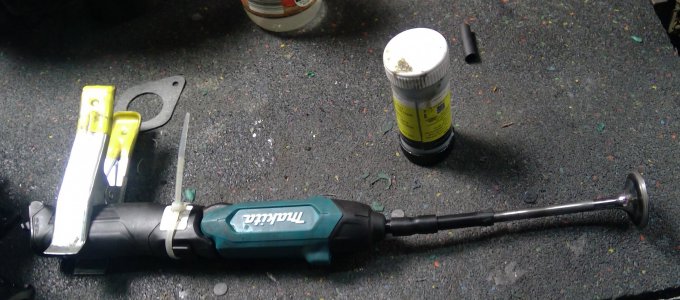I thought some of you might enjoy this.
Lapping valves is just so boring, I have a lot of better things to do than sit around rubbing a stick between my hands for hours on end
Using a drill for this job is nothing new, but cordless screwdrivers are better as they spin quite slow. Sitting there, holding the trigger is also pretty damn boring, so, I rigged up this Makita screwdriver with an 8mm fuel tube over the screwdriver shaft, shoved a 6mm fuel tube into that and pushed it over the valve head.
I then attached a zip tie around the trigger, and a hand clamp around the handle to stop it spinning. Angled the head, turned it on and got on with something else. Returning every now and then to renew the paste and reverse direction.
Cordless screwdrivers are ideal for this job as they spin quite slow.
So, if you're easily bored like me, give it a shot. I should have jumped on the lathe and made a proper setup. After all, I do like making stuff.
Lapping valves is just so boring, I have a lot of better things to do than sit around rubbing a stick between my hands for hours on end
Using a drill for this job is nothing new, but cordless screwdrivers are better as they spin quite slow. Sitting there, holding the trigger is also pretty damn boring, so, I rigged up this Makita screwdriver with an 8mm fuel tube over the screwdriver shaft, shoved a 6mm fuel tube into that and pushed it over the valve head.
I then attached a zip tie around the trigger, and a hand clamp around the handle to stop it spinning. Angled the head, turned it on and got on with something else. Returning every now and then to renew the paste and reverse direction.
Cordless screwdrivers are ideal for this job as they spin quite slow.
So, if you're easily bored like me, give it a shot. I should have jumped on the lathe and made a proper setup. After all, I do like making stuff.



